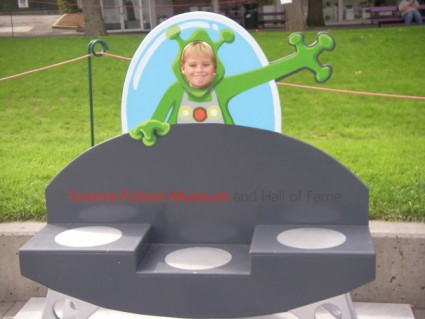Green Has Always Been My Favorite Color

We hear the word, green, a lot lately, as our country is beginning to focus more on new, “green technologies”, “green jobs” and is working toward a goal of a “greener economy.” Being a committed environmentalist, I am excited about the new interest in sustainable and renewable energy and materials.
Gardening should be the “greenest” occupation around, but in fact, many people adhere to landscaping practices that are actually harmful to the environment. on this website, I plan to discuss many “green” garden design concepts and maintenance techniques that help to create healthier, more ecologically-friendly habitats for people and for wildlife.
Some of the topics I will discuss include two of the newest design concepts. Living Roofs, also known as green roofs, are just what, the name implies, a roof is prepared and planted with carefully selected plants. Living roofs are especially valuable in urban areas, where greenspace is limited. Rain Gardens are specially designed systems to reduce the amount of water run-off from a property. The goal of a Rain Garden is to avoid the pollution of our watersheds by reducing the amount of potentially contaminated water that is directed down storm drains, to sewage treatment facilities and to rivers, lakes and oceans.
Other design concepts include, “Low-Maintenance Gardening,” designs that require less time and work and reduce reliance on air and noise polluting power equipment. “Xerophytic Gardening,” uses plants that require less irrigation. Landscape designs for energy conservation can make a huge difference in the cost of heating and cooling buildings. “Permaculture” is a way of integrating food production into your landscape, working with natural systems and using sustainable methods. “Native Plant Gardening” and “Wildlife Gardening” are the best ways to restore the ecology of a landscape.
The biggest challenge is to get people to change their aesthetic ideals. I cringe when I walk down the pesticide aisle at the hardware store, knowing that many of these chemicals will end up in local waters. Reducing Chemical Use in the garden is, perhaps, the most important thing one can do to prevent contaminating the food web. It is a question of priorities, –is a perfect lawn or a perfect rose worth the risk of poisoning our planet? I am not a strict “organic” gardener but any chemicals I do use, I use sparingly.
I try to tactfully encourage “neat-freaks” to give up their sterile, geometric landscapes and embrace a richly diverse, more natural-looking landscape. Years ago, when I worked at the Seymour Conservatory in Tacoma, sometimes, when we changed the floral display, there would not be very many plants actually blooming. We would look back at our design with dismay, disappointed that it was not very colorful. But, then we would look again, with renewed appreciation, turn to each other, smile, and exclaim that “green is a color!” All it takes to appreciate the beauty that surrounds you is a change in how you look at things; a new, fresh perspective!
–To quote a famous frog “It’s not easy being green,” but if you make a commitment to a greener future, you and your children, grandchildren and many generations to come will reap the benefits!
(This article was first published in the Peninsula Gateway on Feb.18, 2009)
Feature Photograph: Sky Bressette at the Fountain Plaza at Seattle Center.


Good points, Dana. I would love to be able to click on each of the parenthesized terms in the article to access a further level of understanding in each of the specific areas. That holds true generally in the articles I’m reading. Access to more specific information in each of these focus areas would be really helpful. Information and understanding are all about layers and paths of information, right? Please think about expanding on these themes as you continue to develop your site.
Thanks, Ricki, I will definitely try to incorporate links as I upload more of my writing. I am also wanting to create a logo. I am thinking of a Celtic Tree-of-Life encircled by a Celtic Knot pattern. I love Greens, Golds and Coppers! I am not very good at drawing. I might be able to find an open-source logo, but would prefer to have one of my own. I am not sure if I can combine some images, overlay or recolor some that I find. What do you think?—Thanks, Dana